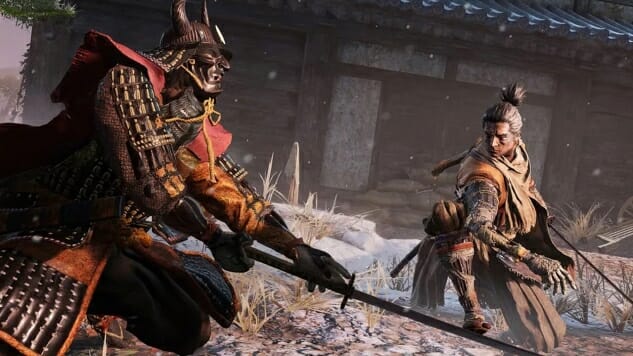Sekiro’s Combat Stays Sharp Despite the Repetition

The main thing you have to prepare yourself for with Sekiro, besides the difficulty, is how much you’ll be repeating yourself throughout the game. Games are largely built on repetition, of course, but it’s a cornerstone of Sekiro’s design, and a vital path to success. You’ll stealthily take out the same clusters of bandits, ogres and giant chickens several times over, sometimes because you’re fighting your way back to a miniboss who has already killed you, sometimes to grind for the points you need to unlock new skills, and sometimes just because it’s fun and makes you feel good to quickly wipe out a bunch of bad guys who initially gave you a hard time. (I wouldn’t necessarily advocate for the bullied to become the bully in real life, but it feels so good in Sekiro.)
“Fun” is a nebulous, subjective concept that many critics try to avoid, but there’s not a better word that sums up why Sekiro’s repetition never becomes a problem. Sekiro’s tightrope combat—a delicate balance of patience, timing and precision that can swing from stately to furious in an instant—is so physically and intellectually satisfying, and such a consistently evolving challenge, that it never grows old. It retains the same kernel of sheer, unabashed fun that you feel from the first time you get a handle of its defense-oriented, posture-disrupting action, but slowly tweaks it through the steady introduction of new skills and techniques.
This might sound like a basic, fundamental description of how videogames are expected to operate: you learn to do a thing, and in the process of doing it a lot that thing gradually changes into a more elaborate and complicated thing. And although that’s true of Sekiro, the changes aren’t what keep that combat from growing old. The underlying engine of that combat—the strict regimen of blocking, parrying and attacking to wear down an opponent’s posture, and then closing in with an instantly fatal blow—is brilliantly realized from the start, turning every encounter into a miniature showdown that depends on a clear eye and a firm resolve. It’s brutal but lean, an economical approach to swordfighting that almost feels like a ninja sword equivalent of the terse and cutting diction of Richard Stark’s hard-boiled Parker novels, and even without the gradual additions and modulations those encounters would remain stressfully invigorating throughout.